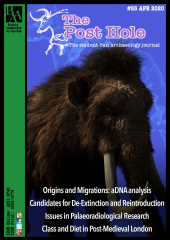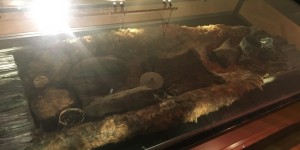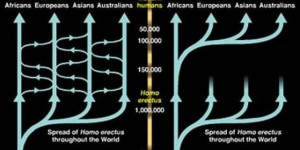Introduction
The limited reintroduction of extant species into the UK has been successful. Beaver populations have been reintroduced across the country, and public support for the reintroduction of other fauna such as: wild cats, moose, and wading birds is in the majority (YouGov 2020).
The Pyrenean ibex, woolly mammoth, thylacine, gastric brooding frog, passenger pigeon and many other extinct species have all been the focus of de-extinction projects (Zimmer 2013; Zimov 2005; Yong 2013; Waters 2019). As the science of de-extinction the pro’s and con’s of which have been well explored (Pimm 2013; Brand 2014) edges closer towards success, the prospect of de-extinct fauna returning to their (pre)historic environments to roam, graze, and hunt again grows.
Discussion
Once the technical problems with de-extinction have been surmounted (Shapiro 2016) and extinct species can successfully be made de-extinct, one overarching question looms: “Now what?”. Are de-extinct species (an inaccurate but useful term) destined to be confined in cages and enclosures in zoos and safari parks - brought back from the dead to be stared at by paying visitors? Or can they serve some greater purpose - one that goes beyond human entertainment and sheer spectacle?
When considering candidates for de-extinction, the aim is to restore lost ecological balance to a suitable environment (Seddon 2017). The reintroduction of grey wolves into Yellowstone National Park provides a low resolution road-map for how the return of native species can trigger a trophic cascade and positively impact local biodiversity to a significant extent (Smith 2003). In 2016 the International Union for Conservation of Nature (IUCN) published the report, ‘IUCN SSC Guiding Principles on Creating Proxies of Extinct Species for Conservation Benefit.’ (IUCN 2016) detailing, how, when, and why extinct species could be made de-extinct, reintroduced into the wild, and have similarly positive effects.

The report suggests that species should only be made de-extinct and reintroduced into environments when: an appropriate species can be found - the species can be appropriately released following the 16 steps described in the report, and when the species will be beneficial to conservation. Once this is satisfied, de-extinction effectively becomes an issue of translocation conservation (Seddon 2014).
Those looking at the UK as a potential home for extinct species must consider the criteria set out in the IUCN report, and must further ask the following questions: was the species once native to the UK? Is the UK’s current environment similar to the species’ last point of habitation? Was the species’ extinction an ‘unnatural’ phenomenon caused by human activity? If the answer to these questions is ‘yes.’ then the species could be a suitable candidate for de-extinction and reintroduction. However, the list of known species that fits this criteria is small. The woolly mammoth (Mammuthus Primigenius), aurochs (Bos Primus), woolly rhinoceros (Coelodonta Antiquitatis), and Irish elk (Megaloceros Giganteus) are all extinct species that were native to the UK, lived in similar climatic conditions to the present day, and were, at least in part, made extinct due to human activity (Barnett 2019).
However, whilst these species might all encourage biodiversity, none of them fill the UK’s main ecological problem: the lack of a non-human apex predator (Morris and Letnic 2017). The UK’s deer population is protected from hunting through strict laws and the lack of large carnivores, and as this deer population of over 2 million grows, so too does the need for ecological balance. The overgrazing of water-sides, forests, and the habitats of large herbivores has both substantial and negative effects on local biodiversity (Morris and Letnic 2017), and was the main reason for the reintroduction of grey wolves into Yellowstone.
These candidate species are all also considered to be megafauna, and though this doesn’t limit the potential for positive ecological impacts, it does come with logistical problems: where is there enough space in the UK for a herd of woolly mammoths to freely roam and graze, which is also far enough away from human settlement as to not cause substantial problems? Factors like this must be considered, and though tourism based solutions might appear in the form of gated mammoth-conservation zones (Whittle 2015), this limits the ability for the species to have significant and positive impact on the ecology, thus undermining the aim of their de-extinction and reintroduction. Extinct carnivores that could fulfil the role of apex predator also encounter this problem; cave bears and cave lions would have to be restricted to captivity, even if that captivity was in a large scale reserve.
Moreover, these species don’t fill a niche that extant species couldn’t already fill. The Eurasian wolf (Canis Lupus Lupus), Eurasian brown bear (Ursus Arctos Arctos), and Eurasian lynx (Lynx Lynx) are once-native large carnivores that could fill the role of apex predator within the UK’s ecology. They do not carry the ethical and financial baggage of de-extinct species. and having lived in the UK within the past 2000 years and currently in wider Europe, their reintroduction would pose lower levels of risk to the existing ecology (Wood 2016).
The Eurasian lynx is a particularly compelling and well suited candidate for the role of apex predator. Public support for the reintroduction of the lynx is currently in the minority at 45%, (YouGov 2020), however this number is higher than for wolves and bears. The lynx would have a positive ecological impact on its woodland habitat by helping to reduce the deer population which could potentially trigger a trophic cascade (Breitenmoser and Haller 1993). The reduced numbers of deer could bring a new biodiversity of local flora - in turn providing habitats for small mammals which feed smaller carnivores. Logistically, the reintroduction of the lynx is far less complex than an extinct species. The Eurasian lynx is non-aggressive towards humans, and lives in the shelter of woodland - only posing a low threat to livestock and farmers (Basille 2009). Unlike extinct species, a road-map for the reintroduction of the Eurasian Lynx and the possible problems along the way has already been created, with Switzerland having successfully reintroduced the species.
Conclusion
While the idea of a woolly mammoth wandering the Yorkshire moors is exciting, the UK does not currently offer potential as a home for de-extinct species. Logistical problems are plenty when considering the reintroduction of de-extinct species, and the candidates fail to solve the UK’s biggest ecological problem: the lack of an apex predator. Instead, the restoration of ecological balance in the UK relies upon the reintroduction and rewilding of extant carnivores: the Eurasian lynx, Eurasian wolf, and Eurasian brown bear are three examples of predators that live in Europe currently, lived in the UK during the Holocene, and that could live here again. The reintroduction of the Eurasian lynx seems to have the most merit: it effectively navigates the logistical problems of size, habitat, aggression, impact on humans, and has higher levels of support among the public than alternative options.
When looking for a solution to the UK’s ecological problems, the answer lies in extant species, not extinct ones. The suggestion is not that the de-extinction and reintroduction of extinct species cannot occur under the right circumstances, but that those circumstances are not currently applicable to the UK.






![Figure 1: Map of cemeteries studied in this essay. Porter, C, "Map of Cemeteries Used" [JPG map], Scale 1:100000, GB Overview [ geospatial data], Updated: 2019, Ordnance Survey (GB), Using: EDINA Digimap Ordnance Survey Service, <http://digimap.edina.ac.uk/>, Created: October 2019.](https://theposthole.org/sites/theposthole.org/files/styles/article_thumb/public/articles/454/fig%202.png?itok=cGHEw2KW)

